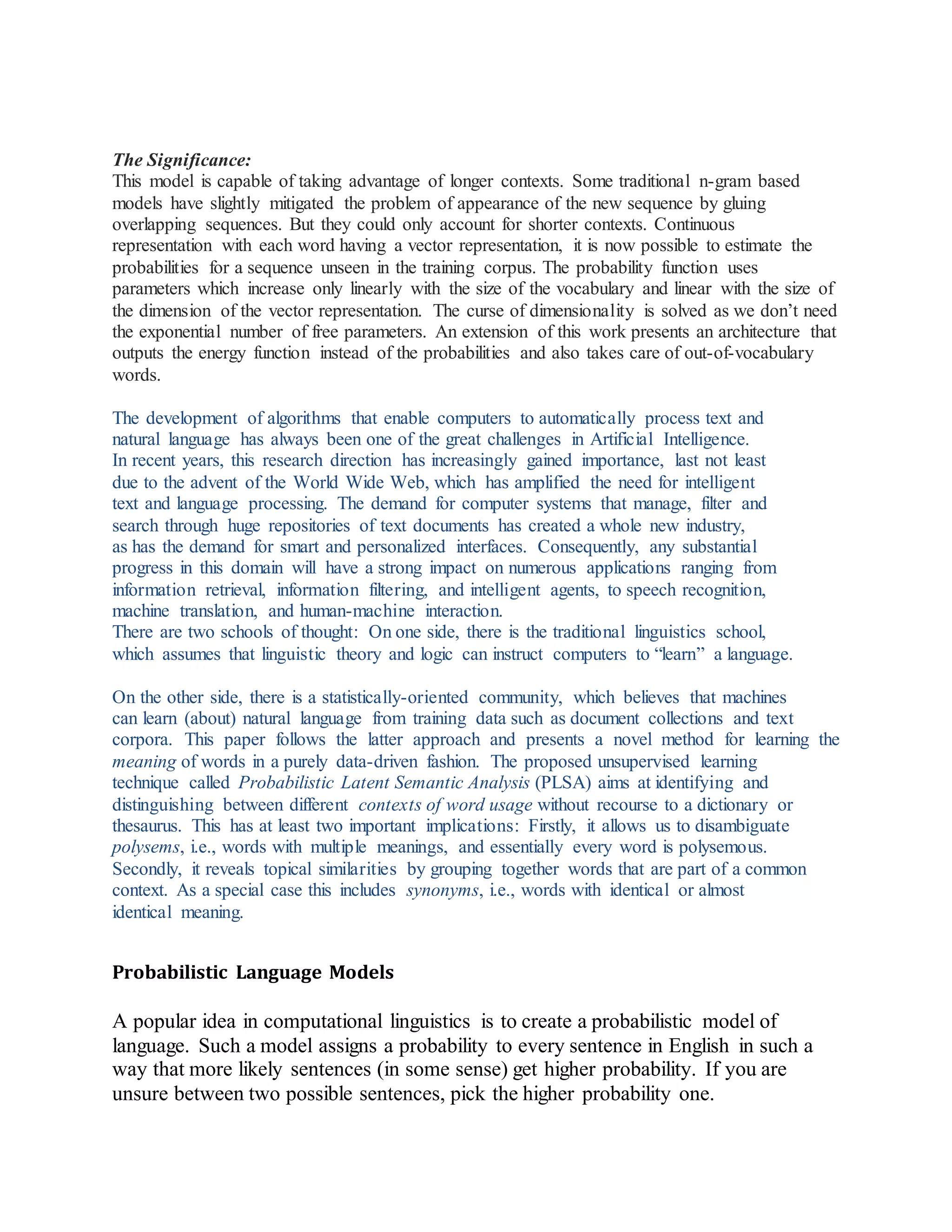The paper presents a neural probabilistic language model that overcomes the curse of dimensionality in probabilistic language modeling. It develops a neural network model with distributed word representations as parameters to learn the probability of sequences. The model learns representations for each word and the probability function as a function of these representations using a hidden and softmax layer. This allows the model to estimate probabilities of unseen sequences during training by taking advantage of longer contexts through continuous representations.


